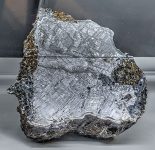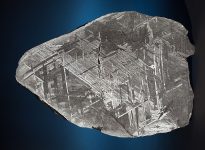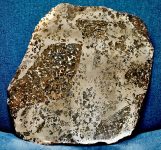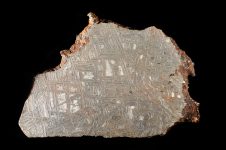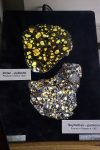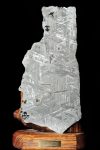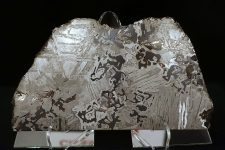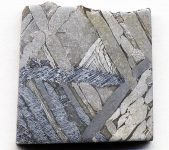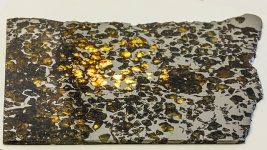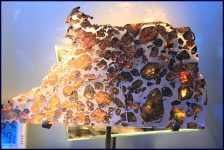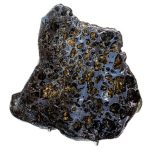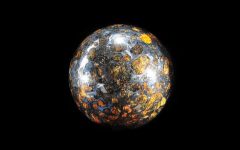Seymchan
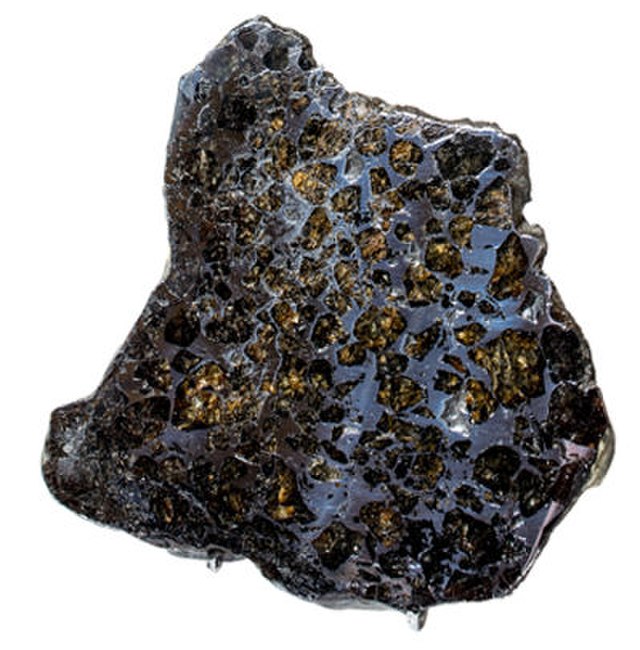
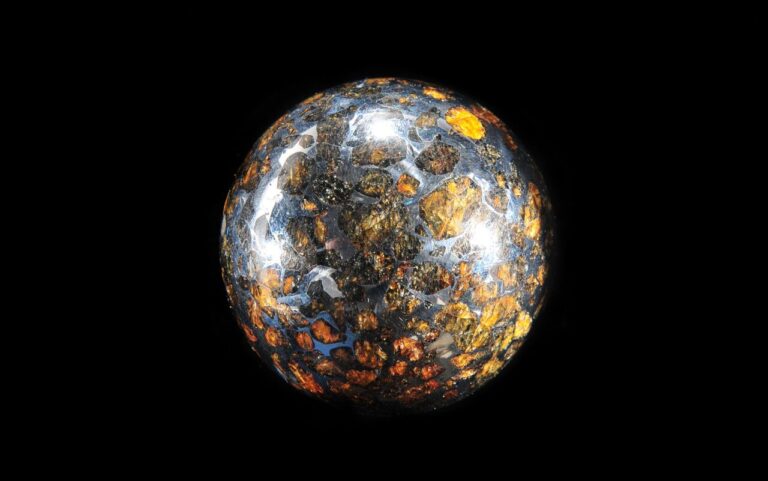
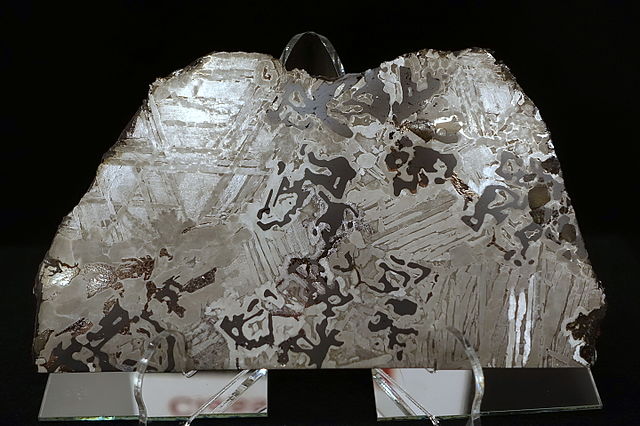
Seymchan
The Seymchan meteorite is a fascinating and scientifically significant pallasite meteorite discovered in Russia. Pallasites are a rare class of stony-iron meteorites composed of olivine crystals embedded in an iron-nickel matrix. The Seymchan meteorite, with its unique composition and structure, provides valuable insights into the formation and differentiation processes of planetesimals in the early solar system.
Discovery and History
The Seymchan meteorite was discovered in June 1967 near the town of Seymchan in the Magadan region of Russia. The initial discovery was made by a geologist named F. A. Mednikov, who found the first mass during a geological survey.
Initial Discovery
The first mass of the Seymchan meteorite, weighing approximately 272 kilograms, was found in a stream bed. This initial find sparked interest among geologists and meteoriticists, leading to further exploration of the area.
Subsequent Finds
Following the initial discovery, additional fragments of the Seymchan meteorite were found in the surrounding area. These subsequent finds included both pallasitic and non-pallasitic material, indicating a heterogeneous nature of the meteorite. The total weight of the recovered fragments exceeds several tons, making Seymchan one of the more substantial pallasite finds.
Composition and Structure
The Seymchan meteorite is classified as a pallasite, a type of stony-iron meteorite that is characterized by the presence of olivine crystals within a metal matrix.
Iron-Nickel Matrix
The metal matrix of the Seymchan meteorite is primarily composed of iron and nickel, similar to other iron meteorites. This matrix is made up of two main iron-nickel alloys: kamacite and taenite. These alloys form the backbone of the meteorite and provide a metallic framework for the embedded olivine crystals.
Olivine Crystals
The defining feature of pallasites, including Seymchan, is the presence of olivine crystals. In Seymchan, these olivine crystals are often gem-quality and can range in color from pale yellow to green. The olivine crystals in Seymchan are notable for their size, clarity, and beautiful color variations, making them highly prized by collectors and researchers alike.
Heterogeneous Structure
One of the unique aspects of the Seymchan meteorite is its heterogeneous structure. Some parts of the meteorite contain abundant olivine crystals, while others are composed mainly of the metal matrix with few or no olivine inclusions. This variability provides a more comprehensive understanding of the formation and evolution of pallasites.
Formation and Origin
The Seymchan meteorite, like other pallasites, is believed to have formed in the boundary region between the core and mantle of a differentiated planetesimal.
Differentiation Process
The formation of pallasites involves the differentiation of a parent body into a metallic core and a silicate mantle. During this process, olivine crystals from the mantle become mixed with molten metal from the core. The Seymchan meteorite is thought to have originated from this core-mantle boundary region, where the olivine crystals became embedded in the iron-nickel matrix.
Parent Body
The exact parent body of the Seymchan meteorite is unknown, but it is believed to be a planetesimal that underwent significant differentiation early in the solar system’s history. The study of Seymchan and other pallasites provides valuable information about the internal structure and thermal history of these early planetary building blocks.
Scientific Significance
The Seymchan meteorite is of immense scientific importance due to its unique composition, structure, and the insights it provides into planetary formation and differentiation processes.
Insights into Core-Mantle Interactions
The Seymchan meteorite offers a direct glimpse into the core-mantle boundary region of a differentiated planetesimal. By studying the olivine crystals and metal matrix, scientists can infer the conditions and processes that occurred during the formation of the parent body. This includes insights into the temperature, pressure, and chemical environment at the core-mantle boundary.
Clues about Early Solar System Processes
The Seymchan meteorite, like other pallasites, formed early in the solar system’s history. By analyzing its composition and isotopic ratios, researchers can gain information about the processes that led to the differentiation of planetesimals and the formation of the solar system. This includes understanding the distribution of elements and the role of impact events in shaping planetary bodies.
Widmanstätten Patterns
In addition to the olivine crystals, the metal matrix of the Seymchan meteorite often displays Widmanstätten patterns when etched with acid. These patterns are indicative of the slow cooling rates experienced by the meteorite in its parent body and provide valuable information about the thermal history and crystallization processes in the core.
Cultural and Aesthetic Value
Beyond its scientific significance, the Seymchan meteorite is also highly valued for its aesthetic qualities. The combination of metallic matrix and gem-quality olivine crystals makes Seymchan slices and specimens highly sought after by collectors and museums.
